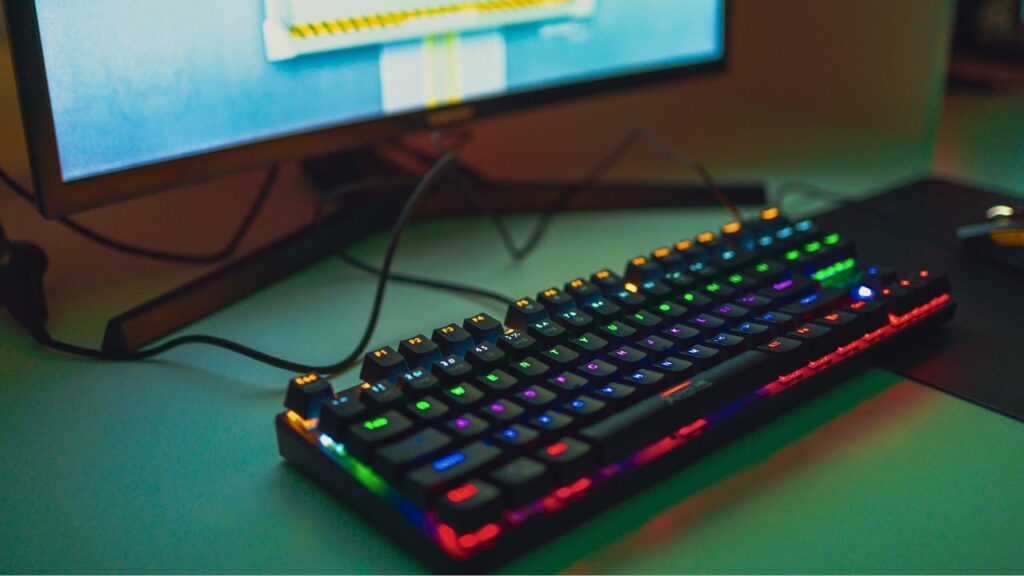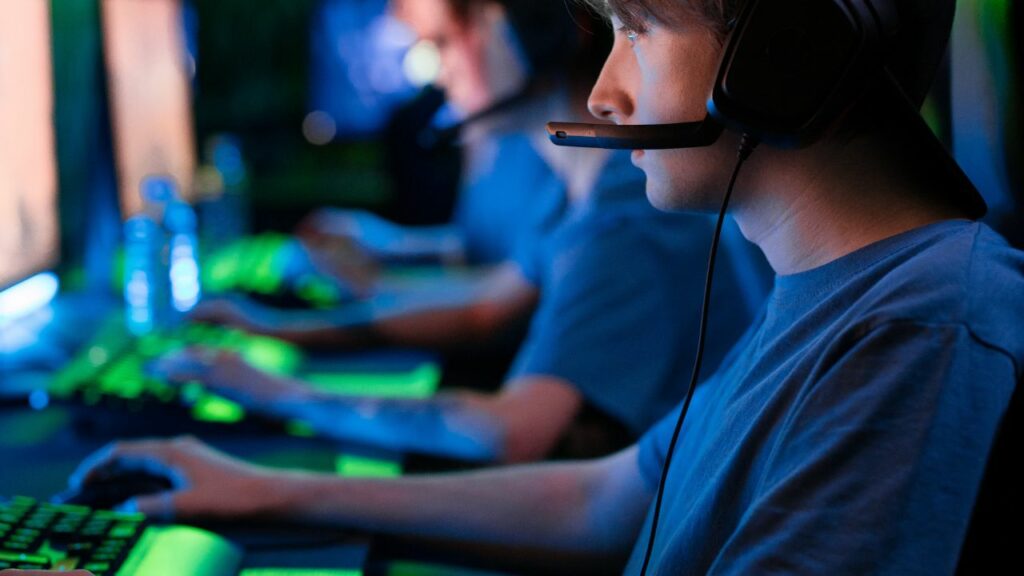
The landscape of first-person shooter (FPS) games has evolved tremendously, making the choice of gaming peripherals a crucial aspect of the gameplay experience. One such peripheral is the gaming keyboard. In this guide, we delve into the world of gaming keyboards, focusing on the most suitable keyboard size for FPS gaming.
Full-Size Keyboards (104 keys)
Full-size keyboards, featuring 104 keys, are the classic choice for many PC users. They come complete with a full row of function keys and a number pad on the right. These keyboards are perfect for heavy numerical work and prove to be excellent allies in games with a high reliance on macros, such as MOBAs and RTS games.
Unfortunately, the size of full-size keyboards can be a downside for FPS gamers. The larger footprint leaves less space for mouse movement, and the increased distance between the mouse and the WASD keys might lead to less comfortable hand positioning during long gaming sessions. The full article about keyboard sizes can be found here.
Tenkeyless Keyboards (87 keys)

Tenkeyless (TKL) keyboards, as their name implies, forgo the numpad seen in full-sized keyboards, leaving you with a total of 87 keys. This downsizing creates additional room for mouse movement, which could be a game-changer in FPS games where victory often hinges on swift and accurate mouse maneuvers.
The trade-off? These keyboards usually lack dedicated media buttons. For some users, this might not be a big deal, but for others who like to control their music or volume directly from the keyboard, it might be a slight inconvenience.
60 Percent Keyboards (68 keys)
60% keyboards take compactness to a new level. They lose not just the numpad, but also the function key row, arrow and home keys, resulting in a total of around 68 keys. They require the use of an Fn key to access certain features, similar to the setup on most laptops.
This compactness comes with a few advantages. First, the keys are packed closer together, allowing for a tighter hit circle, which can be beneficial in FPS and action RPG games. Second, the size makes these keyboards super portable and easy to transport, making them a favorite among gamers who frequently attend LAN parties or tournaments. And let’s not forget the aesthetic value of these tiny but mighty keyboards.
60% keyboards are generally mechanical, offering N-key rollover functionality and fast transmit times. This implies that the keyboard can handle any number of simultaneous key presses and accurately register each one – a feature of immense value in the high-pressure world of FPS gaming.
The primary challenge with 60% keyboards is their learning curve. With various functions packed into fewer keys, it might take a while to get accustomed to the layout. Yet, once you are used to it, the benefits might outweigh the initial hurdles.
The Evolution of Keyboards: Modular Designs
Modular keyboards signify an advanced stage in keyboard customization, allowing users to append or detach sections as per their specific use cases. A prime example of a modular keyboard is the Mountain Everest, featuring a detachable numpad and media buttons that can be positioned on either side of the TKL base.
The philosophy behind modular keyboards is to offer an all-encompassing solution, equipping gamers with the flexibility to modify their keyboard layout in alignment with the game they’re engaging in. For instance, in FPS games, you can opt to eliminate unnecessary components, paving the way for more mouse movement space and a neater desk setup.
Why 60% Keyboards are Ideal for FPS Gaming
Having explored the spectrum of gaming keyboards, it becomes clear that the 60% keyboard emerges as an ideal choice for FPS games. It’s not just about the compact size and ease of transport, although these factors are certainly appealing, especially to gamers on the go.
Greater flexibility in positioning is another substantial benefit of 60% keyboards. The smaller footprint allows for a variety of ergonomic setups, which can help in reducing strain during extended gaming sessions. With FPS games demanding quick reflexes and sustained concentration, this can certainly be a game-changer.
One standout feature of 60% keyboards is their N-key rollover functionality. Amidst the intense battles of an FPS game, where each keystroke can tip the scales between victory and defeat, this feature guarantees that every keypress is precisely registered, regardless of the number of keys being simultaneously pressed.
The keys on most 60% keyboards are mechanical, known for their durability, tactile feedback, and speedy transmit times. The mechanical keys offer a distinct ‘click’ feedback that many gamers find satisfying and helpful in ensuring that their keypress has been registered.
It’s worth mentioning that while the 60% keyboard omits the row of function keys above the numbers, the functions are still accessible, much like on a laptop keyboard. This design decision contributes to the compact size without sacrificing the functionality that gamers need. Discover more about the best 60% keyboards here.
Conclusion

Choosing the right keyboard size for FPS gaming is a balance between personal comfort, desk space, and game performance. Full-size keyboards offer numerous keys and are great for MOBAs/RTS games, but their size may be a disadvantage for FPS gamers. Tenkeyless keyboards strike a middle ground, offering more mouse space but lacking dedicated media buttons.
60% keyboards, with their compact size and N-key rollover functionality, seem to be the top choice for FPS games. They provide greater flexibility in positioning, making them a great choice for gamers seeking a balance between functionality and ergonomics.
Finally, modular keyboards offer unparalleled customization, allowing gamers to adapt their keyboard layout based on their gaming needs.
Remember, the best keyboard for you ultimately depends on your personal preferences and gaming style. So, consider your needs, weigh the pros and cons, and happy gaming!